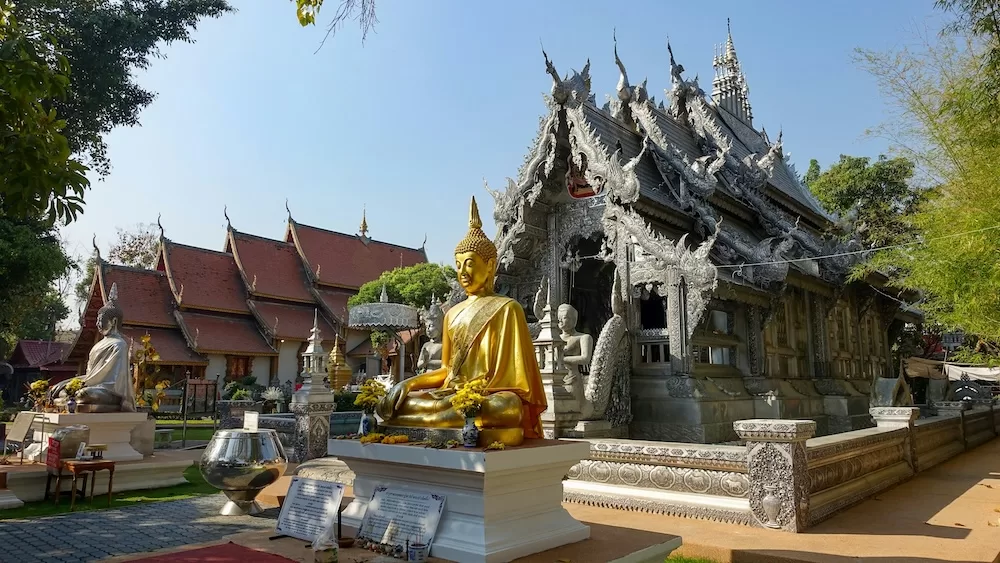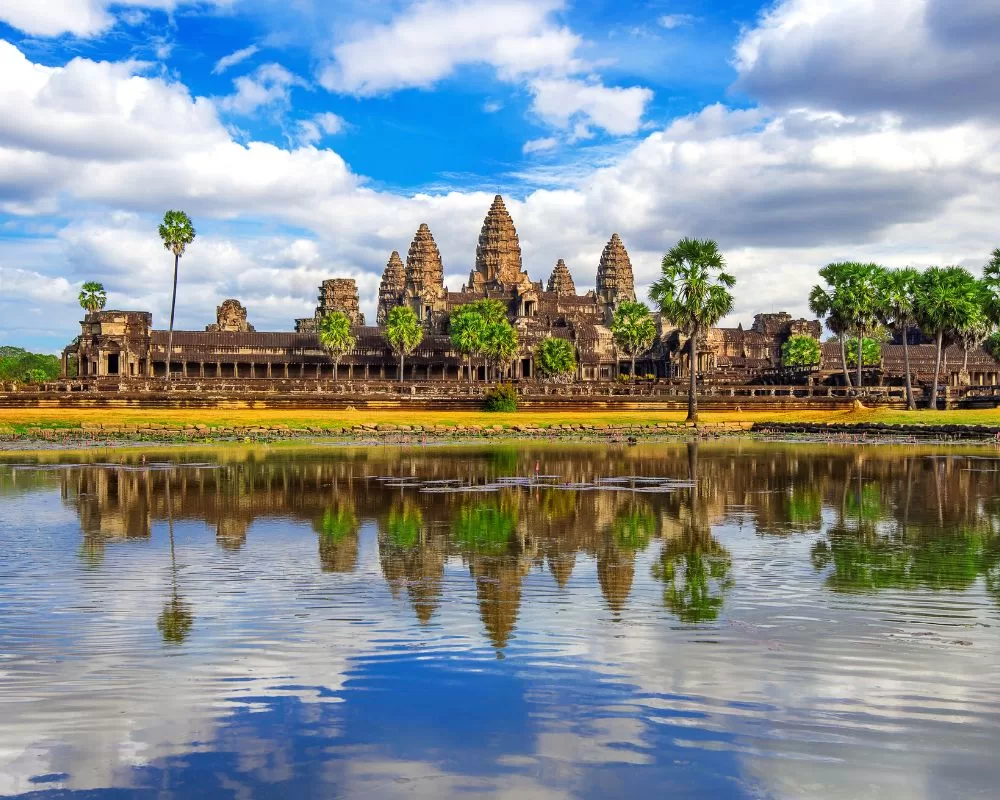
Angkor Wat: Visitors Guide
Unesco – Eighth Wonder of the World
For most people visiting Cambodia, visiting Angkor Wat is top of their list and as it should be – because Angkor Wat is now the eighth Wonder of the World and recognised by Unesco.
Angkor Wat, located in the heart of Cambodia, has trounced Pompeii, Italy, to become the eighth Wonder of the World. Built by the Khmer Civilization, this temple complex is a testament to man’s ability to think big. Angkor Wat still holds the record for being the largest religious structure in the world.
In this post, we explore the history of Angkor Wat. We will discover the underlying symbolic meanings behind the intricate architectural arrangements and designs. Keep reading for the temple complex’s top attractions and top tips on how to get the most out of your visit.
Angkor Wat Temple
- Unesco – Eighth Wonder of the World
- History of Angkor Wat
- The World’s Largest Religious Structure
- Angkor Wat – Things To Know Before Your Visit:
- Angkor Wat Pass – Ticket price
- Angkor Wat Archaeological Park Ticket Inclusions
- Siem Reap Temple and Angkor Wat Entrance Fee
- Angkor Wat Pass – Purchase your ticket the day before
- Angkor Park Pass Ticket Counters – Ticket Office
- Carry Plenty of water and snacks
- Sunrise over Angkor Wat
- Wonder of Architecture
- Heavenly Goddesses
- Built as a Representation of Mount Meru
- What to Wear – Dressing Respectfully
- What not to do at Angkor Wat
- Essential Travel Toolkit
History of Angkor Wat
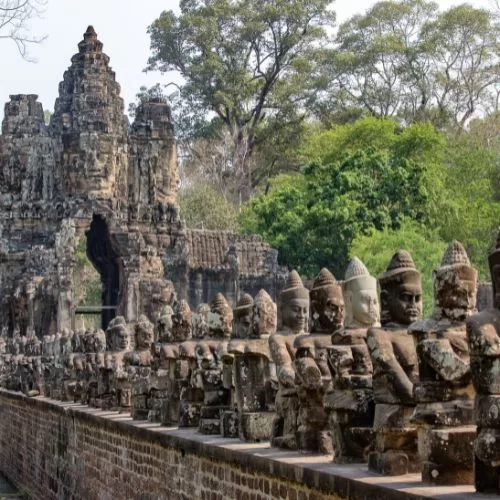
The temple was constructed in the 12th century by Khmer King Suryavarman II. Built initially as a Hindu temple dedicated to Lord Vishnu, it eventually evolved into a well-known Buddhist shrine. The temple mountain and galleried temple are two fundamental Khmer temple architectural designs. Angkor Wat, which spans over 400 acres and is reportedly the world’s largest religious monument, welcomes millions of tourists each year from all over the world. Jayavarman VII, a strong monarch who ruled from 1180 to 1220, restored Yasopdharapura’s defences and positioned his temple mountain, the Bayon, at the heart of the reconstructed city in the late twelfth and early thirteenth centuries.
Restoration of Angkor Wat
The French, who ruled over a portion of Cambodia then, established a committee whose objective was to restore the site so visitors could visit. This happened at the beginning of the 20th century. This group also oversaw ongoing archaeological projects there. While restoration work was carried out intermittently throughout the French administration, significant efforts did not begin until the 1960s. At that time, Cambodia was transitioning from colonial rule to a limited constitutional monarchy.
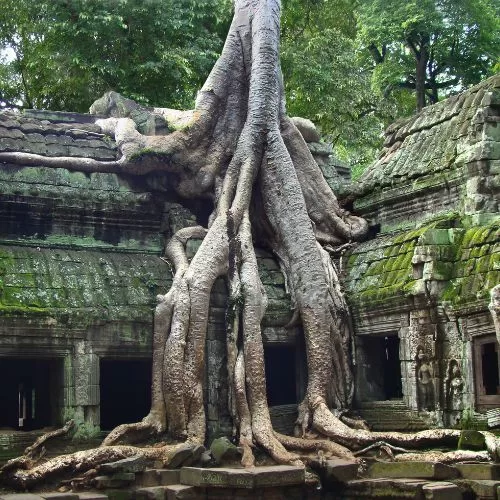
In 1953, Cambodia achieved its freedom under King Norodom Sihanouk. This stability allowed French archaeologists to carry out work at Yasodharapura with Khmer assistance for seventeen years. However, due to the civil war from 1970 to 1975, there was no archaeological development at Angkor. Serious restorations have resumed and missions from France, Italy, Japan and other countries are working hard today.
The Meaning of Angkor Wat
“Wat” refers to the sacred temple located inside the walls of the Angkor complex. “Angkor” honours the immense metropolis that served as the empire’s capital.
The word “Angkor Wat” translated from Kmer means “City of Temples.” This giant and large building is a testament to the Khmer civilization’s architectural talent and spiritual dedication. It skillfully combines Buddhist and Hindu design elements.
The World’s Largest Religious Structure
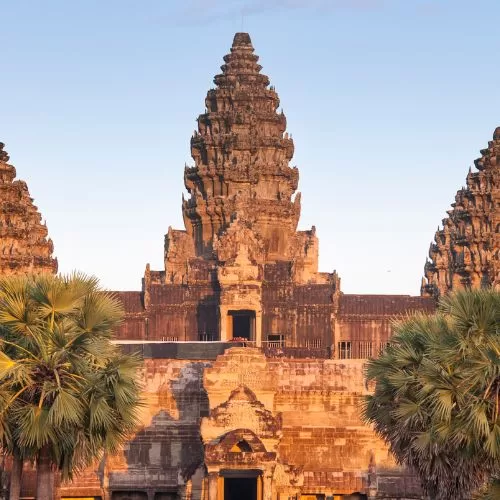
The ancient city of Angkor Wat covered an area of about 1,626 square kilometres, making it 4 times bigger than the Vatican City. It is considered to be the world’s largest religious monument and is an architectural masterpiece.
The temple itself is surrounded by a moat and an outside wall measuring 1,300 meters by 1,500 meters. It is made up of three terraces that are topped by five towers that resemble lotuses. Nevertheless, the temple remains a magnificent building. Its tallest point is the tower above the main shrine, which rises to a height of almost 70 feet.
Angkor Wat Tomb Raider – Lara Croft
FUN FACT: A scene from Lara Croft: Tomb Raider was filmed at Angkor Wat. The famed Hollywood production was filmed at the Angkor temple of Ta Prohm. The daily cost for Paramount to film there was USD 10,000.
Angkor Wat – Things To Know Before Your Visit:
Location of Angkor Wat
Angkor Wat is located around 6km from and near Krong Siem Reap, which is Cambodia’s capital city.
Angkor Wat Pass – Ticket price
Official tickets for the Angkor Archaeological Park are available in 1, 3 and 7-day variants. Note: they are only available from Angkor Enterprise, which is the Cambodian Government site. Be aware that other tickets could well be one of the traveller ticket scams.
All of the temples and sites in this post are accessible when buying an Angkor Pass. Tickets can be used for all temples inside Angkor Park and also other temples in Siem Reap such as the Roluos Group, Wat Athvea and Phnom Krom.
Angkor Wat Archaeological Park Ticket Inclusions
The Angkor Pass covers around 24 temples, gates, palaces and terraces including Angkor Wat, Banteay Srei, Pre Rup, Ta Prohm, Bayon, Angkor Thom and several others. Recently Beng Melea Temple was added to the Pass.
Tickets cannot be used for Koh Ker and Phnom Kulen which require a separate ticket. These are charged at $5, $10 and $20 respectively.
Siem Reap Temple and Angkor Wat Entrance Fee
Below are the ticket costs for 2024. You’ll need a pass if you are thinking of visiting the sites of Siem Reap, the pass represents considerable value.
| Pass Duration | Ticket Price (USD) |
|---|---|
| 1-Day Pass | $37 |
| 3-Day Pass | $62 |
| 7-Day Pass | $72 |
Angkor Wat Pass – Purchase your ticket the day before
When you arrive in Siem Reap, purchase tickets for Angkor Wat for the next day or any part of your Siem Reap stay. The ticket office was relocated in 2016 and is now far from the Angkor Complex, so make sure you know where to go. The Angkor Ticket Booth is open from 5 a.m. to 5:30 p.m., however, queues start forming as early as 4:30 a.m. as last-minute visitors rush to see the sunrise.
Take a photo of you holding your ticket to verify that the pass corresponds to the person who carries it. It is also important to carry your passport with you when visiting.
Angkor Park Pass Ticket Counters – Ticket Office
The Ticket office for Angkor Wat and the Archeological Parks is located in Siem Riep on Street 60. Just be prepared to get your ticket prior to needing it. The address is: Apsara Rd, Krong Siem Reap, Cambodia
Carry Plenty of water and snacks
A common mistake when visiting Angkor Wat is neglecting to carry sufficient water and snacks. Cambodia’s tropical climate can be relentless, particularly when immersed in temple exploration under the scorching sun. Staying hydrated is crucial for maintaining energy levels and ensuring a comfortable experience. Buying water within the temple complex can be expensive, so bring your own and refill it whenever possible.
In addition to staying hydrated, remember to pack enough snacks. The temple complex only offers a few food options, and you don’t want to be hungry and low on energy during your explorations. Pack light, non-perishable snacks like granola bars, trail mix, or dried fruits to keep you fueled throughout the day.
Sunrise over Angkor Wat
The dawn at Angkor Wat is breathtaking. As the sun rises behind the temple, a gorgeous scene is reflected in the waterways in front of it. If you choose to go on a multi-day Angkor tour, think about booking an Angkor Wat sunrise for one day and another, lesser-known temple for the next to guarantee that you get to enjoy a quiet morning.
The temple is bathed in hues of pink, orange, and gold as morning breaks, making for an amazing sight.

Top Tip
If you enter through the East Gate just before sunrise, it is not as busy as the West. Go back outdoors before the sun rises to get the iconic early-morning photo. Many tour groups head back to their hotels for breakfast as soon as daylight comes – so this is the ideal opportunity to explore the temple in greater detail without the crowds.
Wonder of Architecture
Angkor Wat’s outstanding architecture is what elevates it to the status of the eighth wonder of the world. The temple is surrounded by a large moat on all sides and occupies an area of about 500 acres. The five lotus-shaped towers of the central temple complex, a marvel of symmetry and accuracy, represent Mount Meru, the mythical home of the gods in Hindu and Buddhist mythology.
Heavenly Goddesses
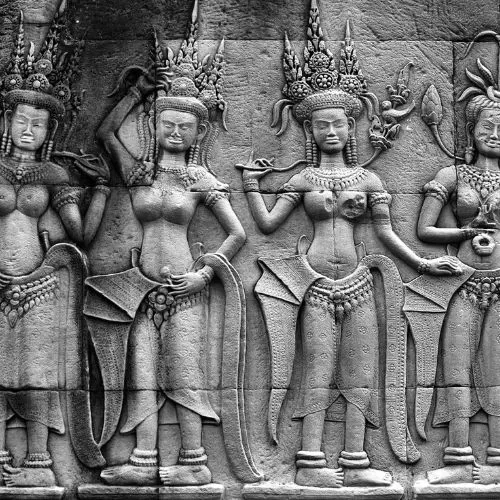
Angkor Wat has roughly 3000 enchanting apsaras (heavenly nymphs) carved into its walls. The story behind these devata goddesses is one of wisdom, love and respect. The Khmer civilization that grew to unify most of Southeast Asia between the 8th and 14th centuries respected women. This is evident today, with temples filled with images of sacred women – termed devata, apsara or Khmer goddesses – who embody the feminine forces of the universe. While women and goddesses appear as icons in many ancient and modern societies, the Khmers gave sanctified women dominance over their state temples more consistently and visibly than any other group.
Built as a Representation of Mount Meru
Angkor Wat’s original religious motifs are derived from Hinduism and the temple was dedicated to the god Vishnu. According to Hindu mythology, Mount Meru is the dwelling place of the gods and the five central towers of Angkor Wat symbolize the peaks of Mount Meru. The mountain is said to be surrounded by an ocean, and the complex’s enormous moat represents the oceans at the edge of the world. The temple is reached by crossing a 617-foot (188-meter) bridge allowing access to the site. Then passing through three galleries, each separated by a paved walkway. The temple walls are covered with bas-relief sculptures of very high quality representing Hindu gods and ancient Khmer scenes, along with scenes from the Mahabharata and the Ramayana.
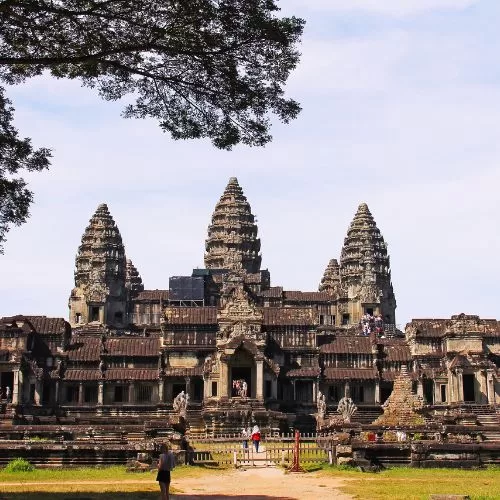
What to Wear – Dressing Respectfully
Even if the weather is hot and humid, Angkor Wat is still a holy place, therefore, ensure that you dress respectfully and adhere to the customs.
Keep in mind that you are visiting a sacred site, and being mindful of this is crucial. Wear appropriate clothing that covers your knees and shoulders. Most importantly, behave appropriately when you’re there, as this isn’t just a pretty tourist picture spot.
What not to do at Angkor Wat
Do Not Touch The Temples
Visitors should not touch carvings, sit or lean on structures, or move anything inside the temples. Even if your intentions are innocent, you can still be punished for any damage you cause. You should also take care that backpacks, umbrellas, high heels or tripods don’t cause any damage.
Don’t ride the elephants!
It may look great, but the reality is, it’s not! The elephants are treated poorly and no ride is ethical, just avoid it altogether.
Buddhist Monks
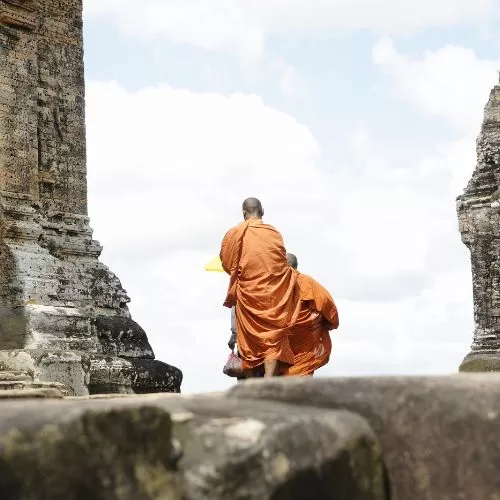
Buddhist monks are highly respected and revered in Cambodian culture.
If you are female, be aware that you should not touch, sit closely, or stare at monks. For a monk, it is against the Buddhist religion to have close relationships with women and these actions will likely make them feel awkward. Furthermore, if you want to take their photo or a photo of anyone in Cambodia, it is polite to ask their permission first.
Transportation
When visiting Angkor Wat in a single day, one of the most important decisions you’ll have to make is how you’ll get around. Because Angkor is so large, travelling from one temple to the next is impossible on foot alone. At each temple, you’ll be doing a lot of walking, not to mention climbing many steps. Hiring a jeep, TuK-Tuks, and bicycles are the three options for getting around Angkor. Foreigners are not permitted to ride motorcycles or scooters within the Angkor complex. Consider joining a small tour that starts at sunrise and offers transportation around the complex.
Top Tips For Visiting Angkor Wat
Hydrate! – It’s hot. Even if it’s not super hot, you’ll be outside the whole day and walking around. Drink water.
Take a break if you need to – If you feel yourself getting tired, frustrated with fighting the crowds, hot, or simply losing interest, take a break! Pause your tour to find a good spot to simply sit and just enjoy being there. Grab a drink (several temples have stalls nearby selling coconuts, water, soft drinks and even beer) or a snack and just relax for a bit.
Wear comfortable footwear – The temple complex is vast, with uneven paths, steep steps, and much ground to cover. Wearing flimsy flip-flops or unsupportive shoes can quickly turn your temple exploration into a painful experience.
Essential Travel Toolkit
🚖 Rideshare Apps – The most complete guide to Rideshare, Ride-hailing and taxis in Southeast Asia.
🚞 12Go.com – The easiest way to book transport, public or private in Southeast Asia, Japan and Beyond.
🏨 Trip.com – Consistently great accommodation and hotel deals.
🛩️ Trip.com – Get the best flight deals.
🚙 Trip.com – Find your perfect rental car.
🗺️ Getyourguide.com – Looking for an amazing local guide or tour. Get Your Guide will have something for everyone.
🗺️ Viator.com – Easily book tours and experiences at the lowest rate. Amazing options all over the world.
👨💻 NordVPN.com – Reliable VPN service that is guaranteed to keep you and your data safe anywhere in the world.
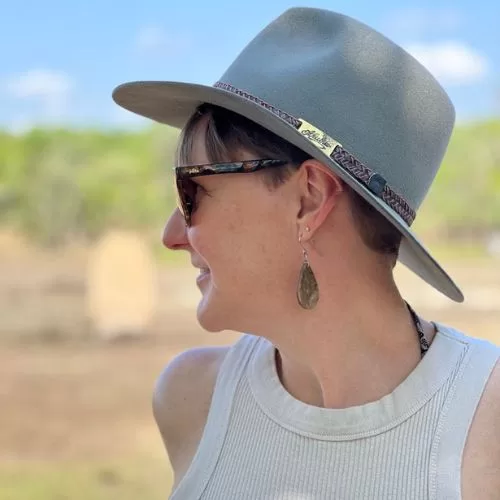
Wendy is a traveller, writer, and photographer with an insatiable curiosity for the world. Her journey, spanning South Africa, the UK, and now Australia, infuses her work with a rich tapestry of experiences. Join her on Getting Lost Again as she shares her creative perspective and passion for overland travel alongside Dan.

